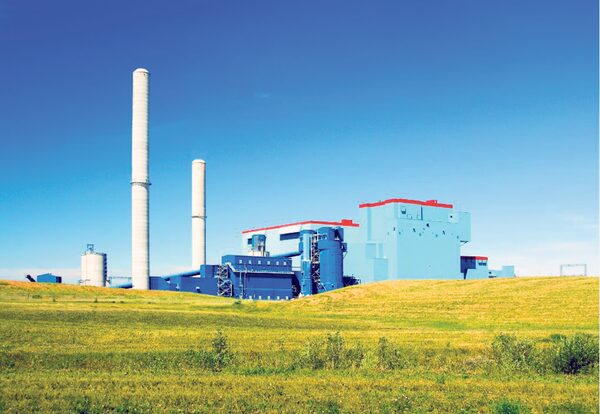
Technology upgrades at the Genesee site in Warburg, Alberta, will enable dual-fuel optionality to increase sustainability and reliability.SUPPLIED
Last year, Alberta experienced the coldest February in half a century. Many communities saw record low temperatures as well as an absence of sun and wind, making power generation from renewable sources virtually impossible.
Such situations illustrate the need for reliable backup power, like natural gas, to partner with renewables “to keep the lights on,” says Kate Chisholm, chief legal and sustainability officer at Capital Power, which owns over 6,000 megawatts of power generation capacity at 26 facilities across North America. “At that time in Alberta, renewables were available less than five per cent of the time on average.”
About 80 per cent of Canada’s electricity generation is already non-emitting, due to an abundance of hydropower in various regions, says Ms. Chisholm. “Unfortunately, some jurisdictions don’t have access to these resources and have to rely on fossil fuels to a certain extent.”
Brian Vaasjo, president and CEO of Capital Power, believes renewable sources can be complemented by natural gas, which presents a low-cost and dispatchable backup option. To advance reliability along with sustainability, Capital Power continues to invest in renewables, and especially wind energy, while working to improve efficiencies and lower the environmental footprint of its “heritage assets.”
Technology upgrades at the Genesee site in Warburg, Alberta, for example, will enable dual-fuel optionality, adding natural gas capabilities to coal-fired electricity generation by 2021. “Other upgrades will reduce our carbon footprint by 12 per cent,” says Mr. Vaasjo. “Genesee 3 will have the lowest CO2 emissions per megawatt hour of any coal plant in North America, with Genesee 1 and 2 also achieving enhanced carbon profiles.”
At the same time, Capital Power is advancing C2CNT, a carbon conversion technology that eliminates emissions and produces a substance that is “completely inert and benign and can never be released into the atmosphere,” says Ms. Chisholm.
The product, called carbon nanotubes, looks like “black cake sprinkles,” she explains. “When we use carbon nanotubes in industrial processes, like steel or aluminum manufacturing or concrete mixing, this helps to reduce the environmental impact of these industries in addition to cutting down emissions at our own stacks.”
And by converting carbon into revenue-generating products, the entire system becomes more cost effective, says Ms. Chisholm. “The revenue from the sale of the product reduces the cost of capture, which can be expensive. We are hoping to create a demand for the carbon nanotubes that will allow us to eventually go to direct air capture.”
The technology is among the finalists for the NRG COSIA Carbon XPRIZE, a global competition that supports the commercial roll out of the winning carbon conversion technology with $20-million, she says.
Beyond applying the technology in North America, there is significant potential for exporting this solution, which Ms. Chisholm describes as “a game-changer.
“It can help to reduce emissions in places where renewables are unavailable or unreliable. In the shift to renewables, we find there is no panacea that can be applied across the globe,” she says. “To move towards a low-carbon future, we need all the tools at our disposal.”
For Capital Power, this means a multi-pronged approach that takes shareholders, stakeholders and the environment into account, says Mr. Vaasjo. “We are accumulating assets that are well positioned on the grid, not just for creating energy but for building systems support and reliability,” he says. “Strategically, we are on the right path.”
Capital Power and GLOBE Series co-developed the carbon capture, utilization and storage session at GLOBE 2020
Produced by Randall Anthony Communications. The Globe’s editorial department was not involved in its creation.